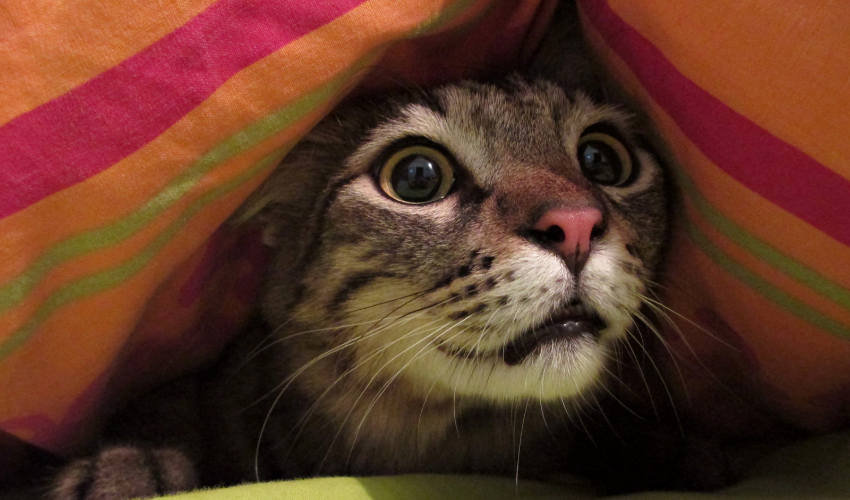Who would have thought that our frisky, furry, and cute friend has once been considered as a magical creature in ancient times and was worshiped and treated like royalty? Yes, cats that we adopt and make members of our family during these modern days have played a huge role in the culture of Ancient Egypt. According to The Rosicrucian Egyptian Museum, cats were even considered as demi-deities. They were known to be the ones responsible for keeping the crops safe and healthy, and are also believed to be the ones in charge of slowing down or preventing the spread of any diseases. Our furry friends were also known to be fearless in killing rodents and snakes and keeping them out of their homes. Apart from their gallant traits and characteristics, cats were also considered to be the bringer of good luck to the people who housed them.
In ancient Egypt, it is believed that Gods and Goddesses can transform themselves into any animals they desire to be. Therefore, animals were worshiped and revered for many several reasons, but cats are considered to be in another level of special. One particular goddess whom Egyptians believed to be the Goddess of home and protector of family is the goddess named Bastet. Bastet is said to be the only god that can transform into a cat. The nurturing and caring nature of cats influenced the perception of Bastet as a guardian of the family and those within it. During the ancient times, cats were most known and loved for their qualities such as being graceful, agile, powerful despite their size and most of all, they are believed to be a good house protector because only their paws and claws are able to pierce through and destroy spirits of evil that try to enter a house. To completely honor Goddess Bastet and her association with cats, a celebration called ‘The Feast of Bubastis’ which takes place in the month of Pakhons which is April in the Gregorian calendar is annually celebrated. The presence of cats and their unparalleled representation of the Goddess Bastet is a notable aspect of this yearly event. According to the accounts of the Greek historian Herodotus, who visited Egypt in the 5th century BCE, descriptions of the festivities include processions, offerings, large number of pilgrims, the music and revelry, and the general atmosphere of celebration.

Wealthy and noble families in ancient Egypt dressed cats in flamboyant ways. They are styled with gold and jewelries, clothed with expensive fabrics, and fed with not just cat food but sumptuous meals prepared at the dining table of these families. Cats were more than just domestic pets, they were part of the family and treated with high regard and value. They were so special that when cats were killed even by accident, those who had a role to play in their demise were sentenced to death. The killing or murder of a cat was not only a legal consideration but was also an act that is not acceptable to the public. This is an act that would evoke public rage and disapproval and nothing seems to be a fitting punishment but death. The penalties for harming a cat reflected the deep intertwining of religious beliefs and legal consequences. The penalties for harming a cat reflected the deep intertwining of religious beliefs and legal consequences during these times.
After death, you would wonder if the human companion of these cuddly and curious creatures just moves on and goes on with their lives, but that is not how things go. According to research cat owners shave off their eyebrows as a sign of grief and despair. Those who pet them would not stop mourning until their eyebrows go back. Also to highlight the importance, love and the humongous roles these cats played for every family and its owner, whenever cats die, they are mummified. According to National Geographic, many cat mummies have been discovered in archaeological excavations, highlighting the significance of cats in ancient Egyptian religious practices. It is also believed that cats play a very integral role in the afterlife. In fact, paintings of cats or even the mummified cats were placed inside their human companion’s tomb according to the Carnegie Museum of Natural History. One reason for this according to Monique Skidmore, a professor of anthropology in Deakin University and editor of Trip Anthropologist is so that the soul or spirit of the dead could inhabit the body of the mummified cat in the afterlife.

Now even though there were a lot of tangible pieces of evidence of how important and integral the roles of our furry babies played in ancient Egypt be it historical and cultural, it is also believed that these cute creatures were not worshiped as Gods themselves. They were worshiped because they were considered as the receptacle of various Gods and Goddesses who chose to inhabit them. As for ancient Egypt, cats have become a symbol and a daily indication of the power of Goddess Bastet. The power that people of Egypt held and depended on.
Today, we must be reminded of the ancient Egyptians’ appreciation of the sanctity not just of a cat’s life but of life itself in general. Now every time you hug, pet, and give your furry friend smooches and cuddles, remind yourself how they always deserve better. Royalty or not, they deserve our love and our affection.













